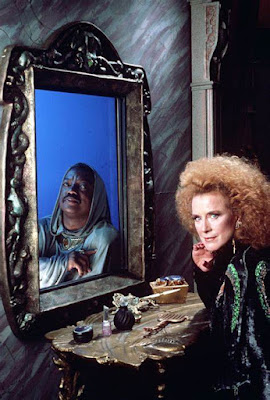Occasionally the classic TV era generates multiple headlines decades after its departure. Usually that mean obituaries, and there were three of note this past week.
The one that hit closest to home with me was Rick Hurst, as I knew him. Not well, but when I wrote my Dukes of Hazzard book he was the first cast member I interviewed. “Starting at the bottom,” he said, smiling, as we took our seats at a café in Los Angeles coincidentally called Dukes.
He played cops on other shows as well, including Sanford and Son, The Partridge Family, Love, American Style and Get Christie Love. And he was a regular on two short-lived series, On the Rocks and Amanda’s. His IMDB page lists more than 70 credits.
He was a busy character actor and a good one, and more importantly he was a kind and humble man. After my book came out I met up with him at a park in L.A. where he was watching his son play in Little League. He signed my book after several other cast members had done so, and once again joked about being at the bottom of the list.
“I don't know about y'all but I believe in an afterlife,” wrote Ben Jones (Cooter), “and I can see Rick up there in Heaven with Jimmy Best and Sorrell Booke and Denver Pyle, putting on the funniest show inside those Pearly Gates.”
Newspaper headlines identified Lalo Schifrin, who died at age 93, as “composer of the Mission: Impossible theme,” and if that were all he did it would still be an impressive legacy.
One of the series’ defining qualities was how quickly its stories moved - once that fuse was lit in the opening credits and the IM force got their marching orders from Mr. Phelps (or Mr. Briggs), the pace rarely slowed as elaborate plans were executed with expert precision. Schifrin’s propulsive theme managed to capture that same feeling of intensity, setting the perfect tone for the stories that followed.
He scored other TV shows – Mannix, Medical Center, T.H.E. Cat, and movies as well, but there’s a reason Mission: Impossible is always referenced first when his name is mentioned. Whatever you think of the M:I film series with Tom Cruise, give them credit for knowing they’d never come up with better music than what Schifrin already created.
Bobby Sherman was not eulogized as a TV star, but he first came to national attention in the series Here Come the Brides (1968-1970), for which he also performed the theme song, “Seattle.” He had seven top 40 hits, more than fellow Tiger Beat teen idol David Cassidy, but not as many as Donny Osmond. Then he left show business to become a paramedic, which is pretty awesome.
The passing of Bill Moyers comes at a time when debate rages in Washington over whether a government that is trillions in debt should continue to fund PBS. Moyers was one of public television’s most respected journalists, perhaps best-remembered for his six-part interview series “Joseph Campbell and the Power of Myth.”
He was a liberal but a principled one, who largely kept his personal politics out of his shows and specials – until he was driven over the edge by Donald Trump like so many on the left. He once said that Trump had “an open sore” instead of a soul.
“The shooting of it was beyond anything you could imagine,” she told me. “We could not keep it together.” Her recollections were more entertaining than the show, and we also got to chat about her first classic TV series, Lassie, and her time on Petticoat Junction. As a General Hospital fan, I also remember her as Mariah Ramirez, Felicia’s mother.
We who celebrate the Comfort TV era do so because we think it’s worth celebrating, and find what it gave us to be preferable to what we’re being offered now. I know there will be more sad days like this as we say goodbye to those who entertained us, and occasionally a heartening milestone also worthy of observance. As Linda Ellerbee used to say, and so it goes.










































